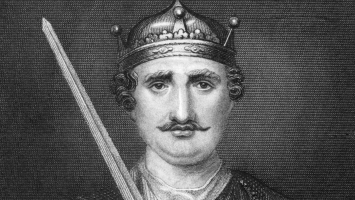Top 8 Interesting facts about Domitian
Domitian (October 24, 51 – September 18, 96) was a Roman emperor who ruled from 81 to 96. He was the final member of the Flavian dynasty, the son of Vespasian ... read more...and the younger brother of Titus, his two predecessors on the throne. Look at the list of the 8 interesting facts about Domitian to discover a little more information about him.
-
Domitian was assassinated on September 18, 96, in a plot orchestrated by court officials. Suetonius provides a thorough account of the plan and the assassination. He claims that Domitian's chamberlain Parthenius was the principal plotter, and historian John Grainger suggests that Parthenius was motivated by his fear of Domitian's recent death of Nero's former secretary Epaphroditus. The deed was carried out by Maximus, a freedman of Parthenius, and Stephanus, a steward of Domitian's niece Flavia Domitilla. A multitude of omens, according to Suetonius, foreshadowed Domitian's demise. Larginus Proclus, a Germanic soothsayer, foretold Domitian's death date and was so sentenced to death by him.
Minerva had appeared to the Emperor in a dream some days before the assassination. She declared that she had been disarmed by Jupiter and could no longer guard Domitian. The Emperor expected to die at lunchtime, according to an auspice he had received. As a result, he was always agitated around that period. Domitian was worried on the day of the assassination and constantly asked a servant what time it was. The servant, who was a plotter himself, lied to the monarch, telling him it was already late in the day. The Emperor, apparently at ease, walked to his desk to sign some decrees. Stephanus, who had been feigning an injury to his arm for several days and wearing a bandage to allow him to carry a concealed dagger, suddenly appeared. Stephanus, who had been pretending an arm injury and wearing a bandage to conceal a blade for several days, suddenly arrived.
Stephanus and Domitian had fought on the floor during the attack, during which Stephanus was stabbed by the emperor and died shortly afterward. Domitian's body was carried away on a common bier and burned unceremoniously by his nurse Phyllis. She afterward transported the emperor's ashes to the Flavian Temple and interred them besides those of his niece, Julia. He was 44 years old at the time. His death occurred around midday, as predicted.
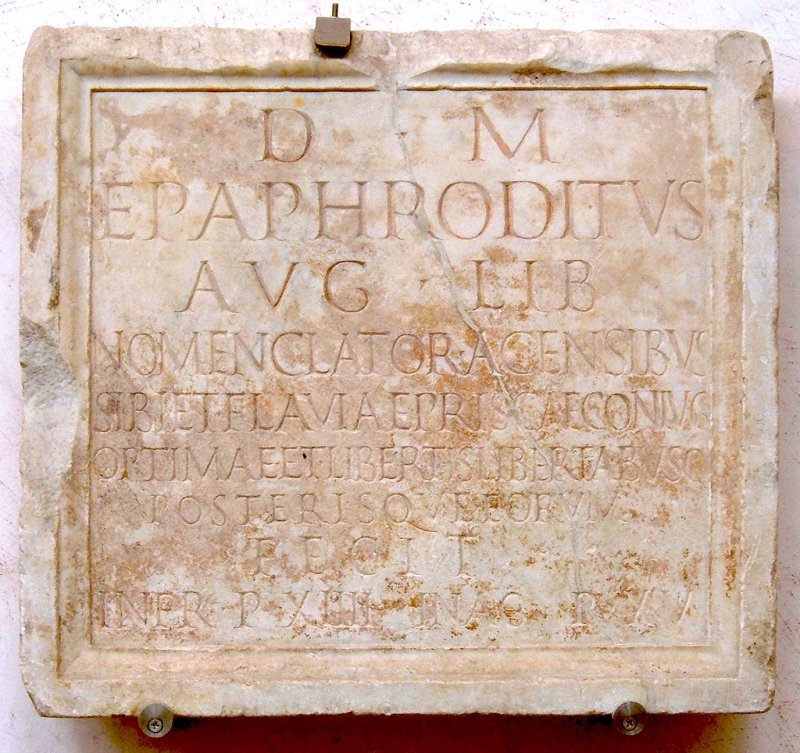
Funerary inscription for Epaphroditos, Museo Epigrafico, Rome -en.wikipedia.org 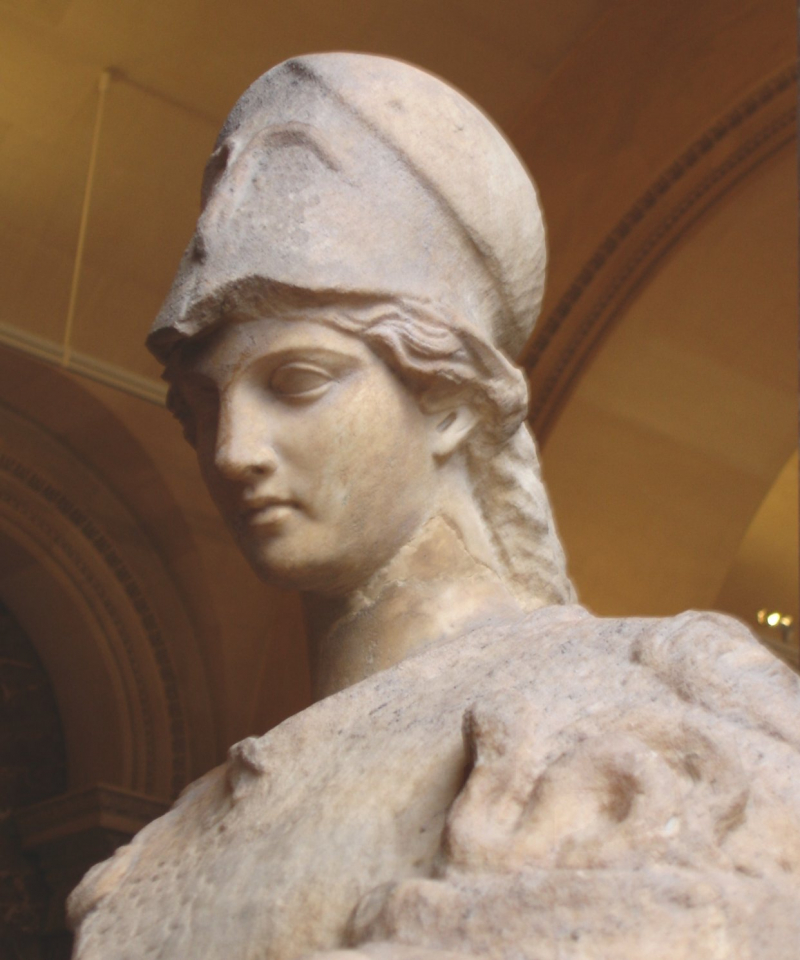
Minerva -en.wikipedia.org -
Domitian was a firm believer in traditional Roman religion, and he personally ensured that ancient practices and morality were followed throughout his reign. Domitian promoted connections with the principal deity Jupiter in order to justify the divine nature of the Flavian rule, probably most notably through the spectacular reconstruction of the Temple of Jupiter on Capitoline Hill. A tiny chapel dedicated to Jupiter Conservator was also built near the house where Domitian had sought refuge on December 20, 1969. Later in his reign, he replaced it with a larger structure dedicated to Jupiter Custos. Minerva, on the other hand, was the deity he most fervently revered. He not only kept a personal shrine to her in his bedroom, but she also appeared on his currency on four different recorded reverse kinds, and he formed a legion in her honor, Legio I Minerva.
Domitian also resurrected imperial worship, which had fallen out of favor under Vespasian. His first act as emperor was the deification of his brother Titus, which was significant. His young son and niece, Julia Flavia, were also enrolled among the gods after their deaths. He built the Temple of Vespasian and Titus, a temple dedicated to the adoration of his deified father and brother, and erected a dynastic mausoleum on the site of Vespasian's former house on the Quirinal. To commemorate the Flavian family's military victories, he authorized the construction of the Templum Divorum and the Templum Fortuna Redux, as well as the completion of the Arch of Titus.
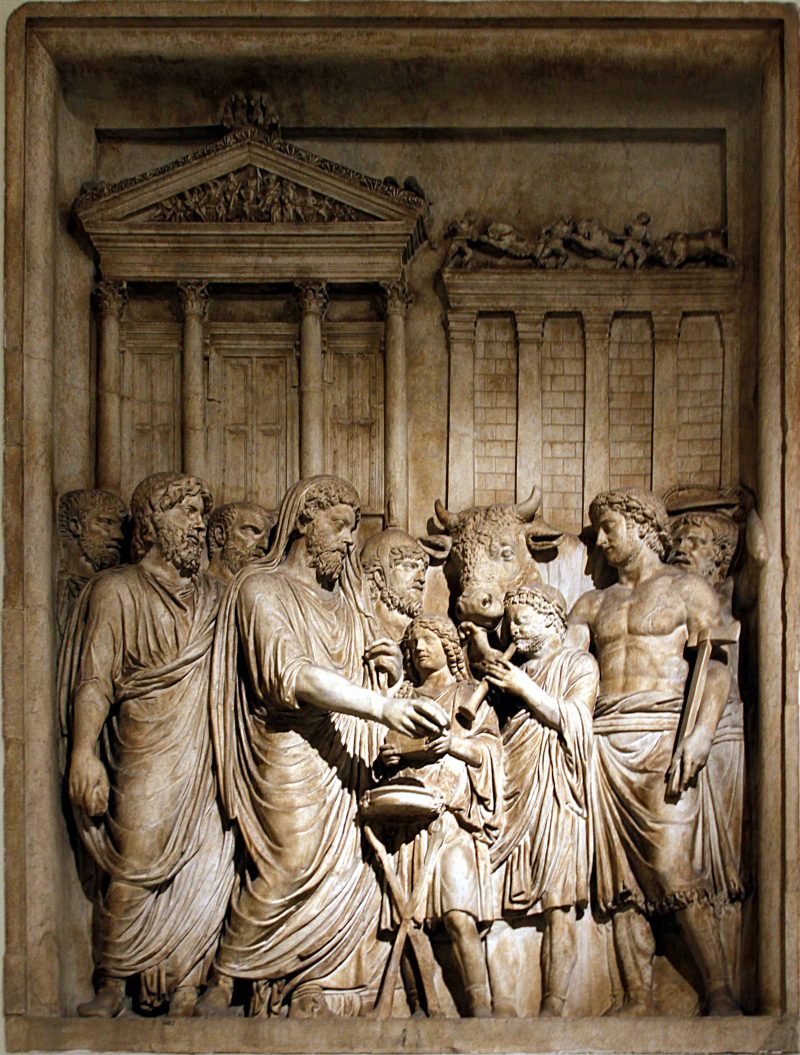
The Temple of Jupiter Custos -en.wikipedia.org 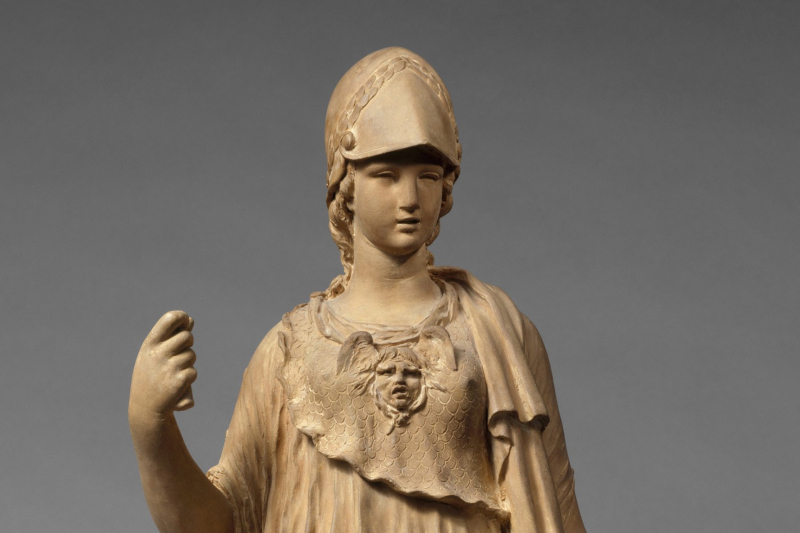
Minerva -mythopedia.com -
It is a fact that he built the Limes Germanicus. Domitian's military campaigns were generally defensive in nature, as the Emperor opposed the idea of expansionist warfare. His most major military accomplishment was the creation of the Limes Germanicus, a huge network of roads, forts, and watchtowers built along the Rhine to defend the Empire.
From 83 to roughly 260 AD, the Limes Germanicus (Latin meaning Germanic frontier) was a line of frontier fortifications that delimited the ancient Roman provinces of Germania Inferior, Germania Superior, and Raetia, dividing the Roman Empire and the unsubdued Germanic tribes. The Limes often employed a natural boundary such as a river or an earth wall and ditch with a timber barrier and watchtowers at intervals. Behind the Limes, a network of linked forts was constructed.
The path of the limes shifted over time as a result of advances and retreats caused by external threats. At its peak, the Limes Germanicus extended from the Rhine's North Sea outlet to near Regensburg (Castra Regina) on the Danube. With the exception of a gap running roughly from Mogontiacum (Mainz) on the Rhine to Castra Regina, these two major rivers provided natural protection from mass invasions into imperial territory.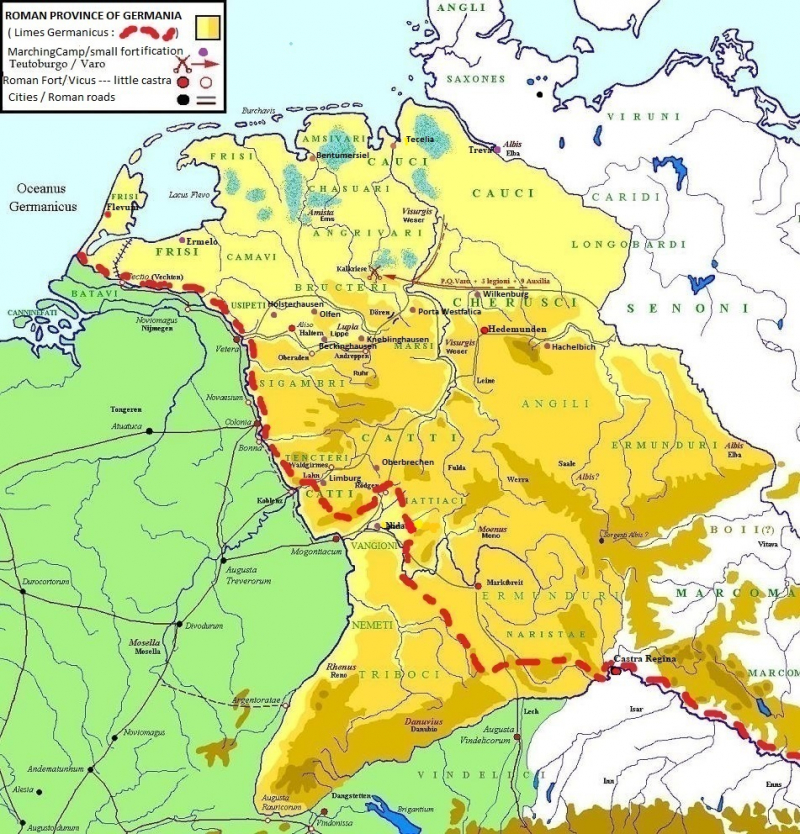
en.wikipedia.org 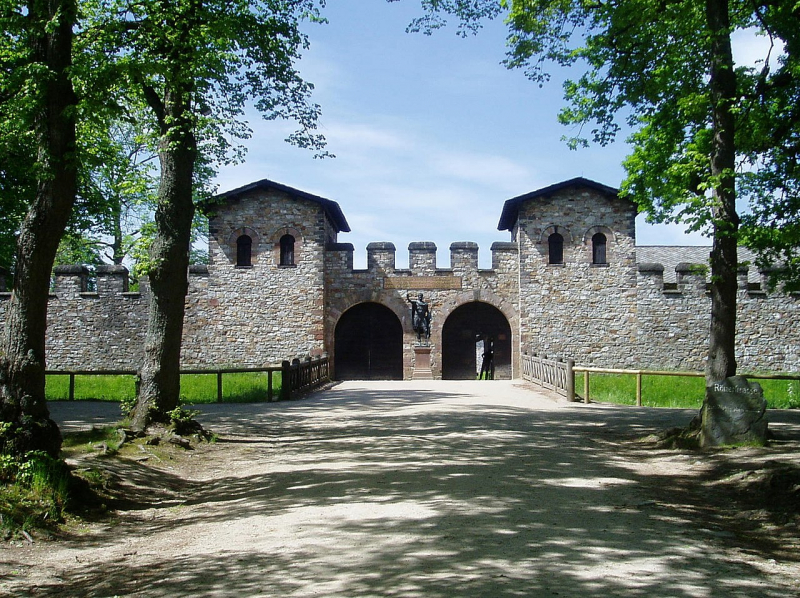
holamon.cat -
One of the most interesting facts about Domitian is that he completed the Colosseum. The Colosseum is an oval amphitheater located in Rome, Italy, immediately east of the Roman Forum. It is the largest ancient amphitheater ever erected and, despite its age, the largest standing amphitheater in the world today. Construction began in 72 during the reign of Emperor Vespasian (r. 69-79 AD) and was completed in 80 AD under the reign of his successor and heir, Titus. During Domitian's rule, additional changes were enacted (r. 81–96). The Flavian dynasty was named after the three emperors who supported the project, and the amphitheater was named after them.
The structure was later rebuilt by Vespasian's younger son, the newly proclaimed Emperor Domitian, who built the hypogeum, a system of tunnels used to keep animals and slaves. He also constructed a gallery on the Colosseum's roof to boost seating capacity. The arena was 83 by 48 meters (272 by 157 feet / 280 by 163 Roman feet). It consisted of a hardwood floor covered in sand (harena or arena is the Latin word for sand) that encased a complex underground construction known as the hypogeum (literally meaning "underground"). Emperor Domitian ordered the construction of the hypogeum, which was not part of the original design. Early in the Colosseum's history, however, the construction of the hypogeum at Domitian's request put an end to the practice of flooding, and hence to naval battles.
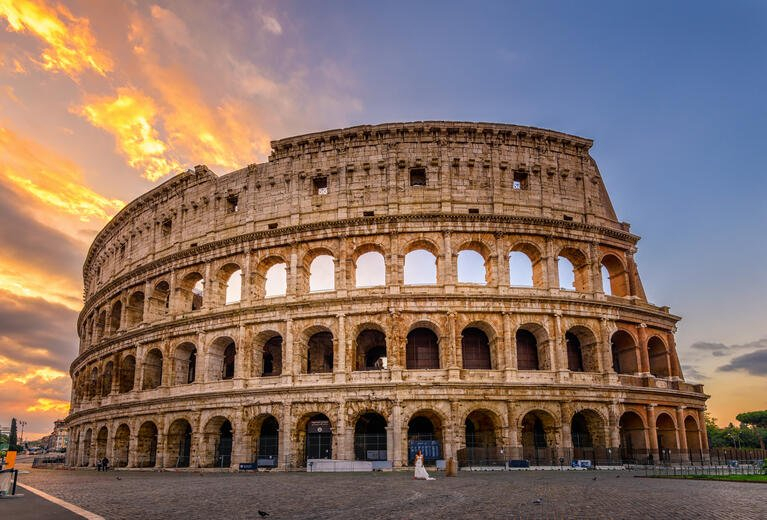
gocity.com 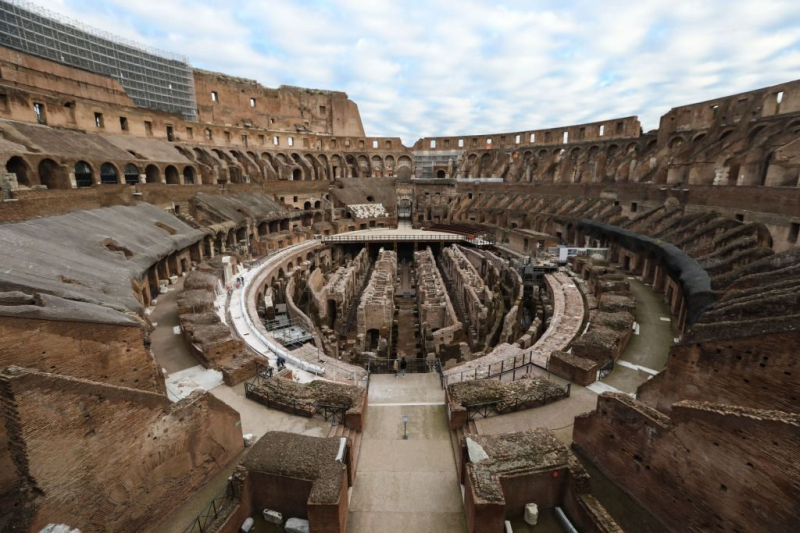
news.artnet.com -
Another interesting fact about Domitian is that he strengthened the economy by revaluing the Roman coinage. For the majority of Roman history, coinage was made of gold, silver, bronze, orichalcum, and copper. From its inception in the Republic in the third century BC to Imperial times, the Roman currency underwent numerous changes in form, denomination, and composition. Over the centuries, one recurring feature was the inflationary debasement and replacement of coins. Notable examples of this followed Diocletian's reforms. This pattern persisted throughout Byzantine times.
Domitian's proclivity for micromanagement was most visible in his financial policy. The topic of whether Domitian died with the Roman Empire in debt or with a surplus has been hotly disputed. For the majority of Domitian's reign, the evidence pointed to a balanced economy. Upon his ascension, he significantly devalued the Roman currency.He increased the silver purity of the denarius from 90% to 98%, resulting in an increase in silver weight from 2.87 grams to 3.26 grams. Due to a financial crisis in 1985, the purity and weight of silver were reduced to 93.5% and 3.04 grams, respectively. Nonetheless, the new values were higher than those maintained by Vespasian and Titus during their reigns. Domitian's strict taxation strategy assured that this level was upheld for the next eleven years. The quality of coinage during this era is extremely constant, with precise adherence to Domitian's titulature and polished artwork on the reverse portraits.
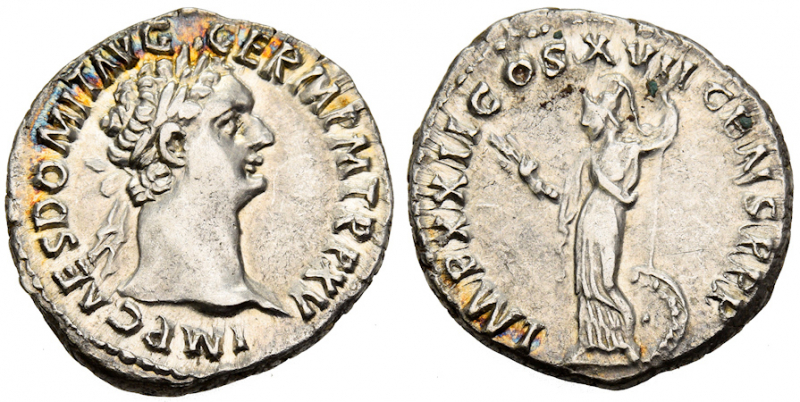
Roman Coins of Domitian -forumancientcoins.com 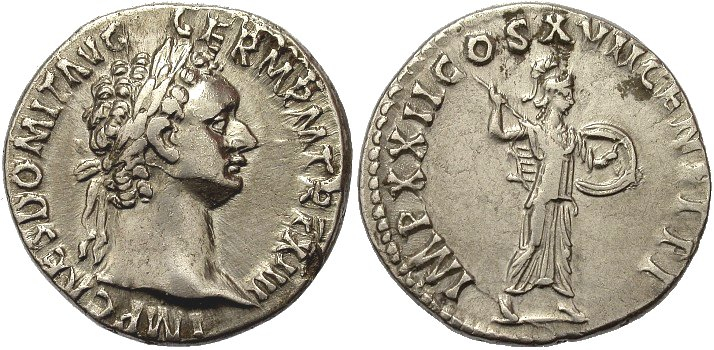
Roman Coins of Domitian -forumancientcoins.com -
One of the most interesting facts about Domitian is that he was described as "a ruthless but efficient autocrat". His authoritarian style of rule put him at a clash with the Senate, whose powers he severely limited. Members of the Roman Senate regarded him as a tyrant. In ancient Rome, the Roman Senate served as a governing and advising body. It was one of the most enduring institutions in Roman history, having been formed in the early days of Rome (traditionally founded in 753 BC). It survived the overthrow of the Roman monarchy in 509 BC, the fall of the Roman Republic in the first century BC, the division of the Roman Empire in AD 395, and the fall of the Western Roman Empire in 476, as well as Justinian's attempted reconquest of the west in the sixth century, and lasted well into the history of the Eastern Roman Empire.
Domitian was killed by court officials in 96, bringing an end to his reign. On the same day, his advisor Nerva took his place. Domitian's memory was doomed to oblivion by the Senate after his death, while senatorial and equestrian authors like Tacitus, Pliny the Younger, and Suetonius perpetuated Domitian's image as a ruthless and paranoid ruler. Instead, modern revisionists see Domitian as a ruthless but effective tyrant whose cultural, economic, and political plans laid the groundwork for the calm second century.
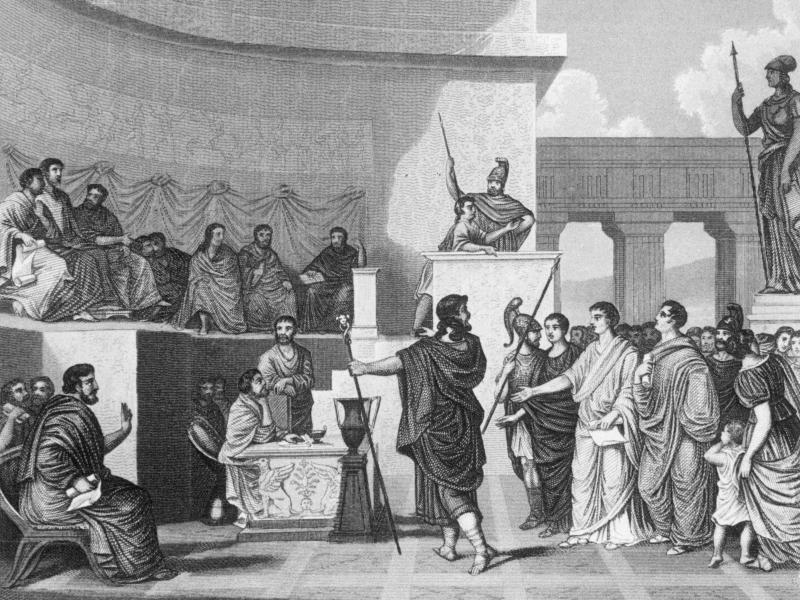
the Roman Senate -thoughtco.com 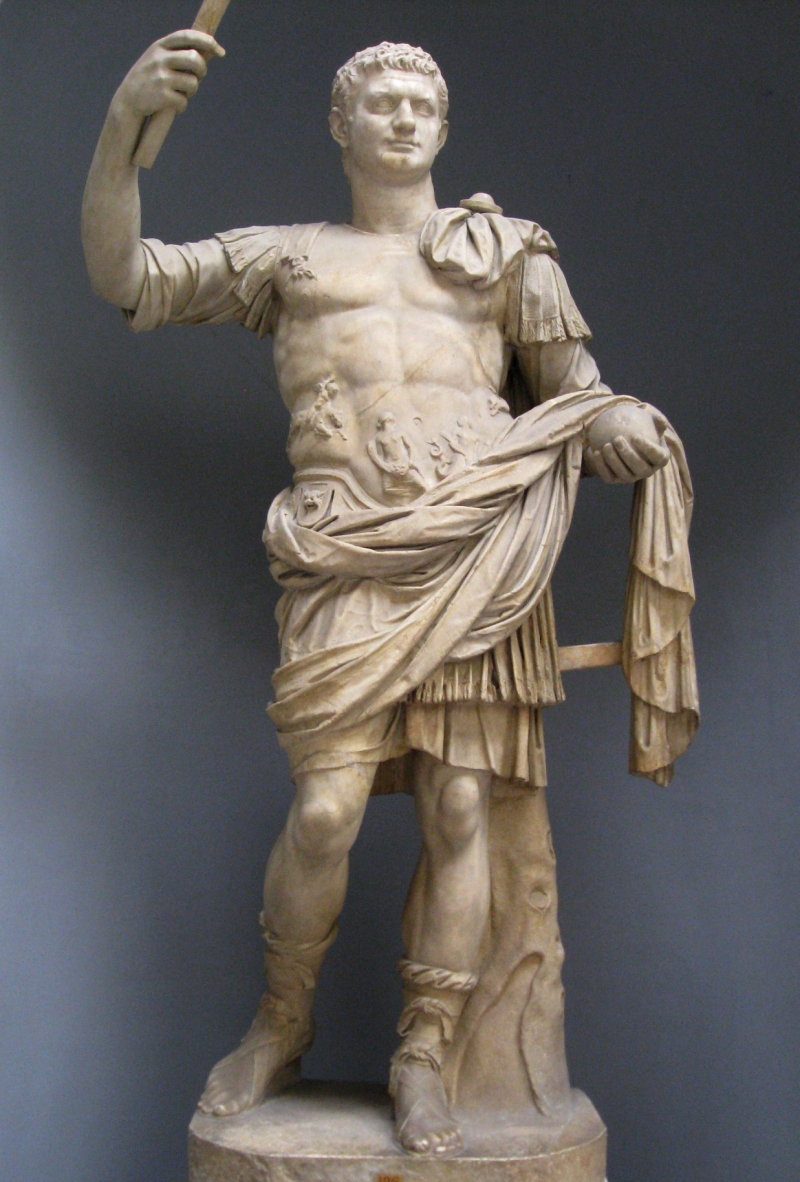
commons.wikimedia.org -
It is a fact that he was the last member of the Flavian dynasty. Between AD 69 and 96, the Flavian dynasty dominated the Roman Empire, covering the reigns of Vespasian (69-79) and his two sons Titus (79-81) and Domitian (81–96). During the civil war of 69, known as the Year of the Four Emperors, the Flavians rose to power. After the deaths of Galba and Otho in quick succession, Vitellius ascended to the throne in mid-69. Legions stationed in the Eastern provinces swiftly contested his claim to the throne, declaring their commander Vespasian emperor in his place. The Second Battle of Bedriacum effectively shifted the balance in favor of the Flavian armies, who stormed Rome on December 20. The following day, the Roman Senate declared Vespasian Emperor of the Roman Empire, launching the Flavian dynasty. Although the dynasty was short-lived, major historic, economic, and military events occurred during their reign.
Economic and cultural reforms were also initiated by the Flavians. New tariffs were created under Vespasian to repair the Empire's finances, while Domitian revalued Roman coinage by increasing its silver content. Titus implemented a huge building program to commemorate the ascension of the Flavian dynasty, leaving numerous surviving buildings in Rome, the most remarkable of which was the Flavian Amphitheatre, commonly known as the Colosseum.
Domitian was killed on September 18, 96, bringing an end to the Flavian rule. Marcus Cocceius Nerva, a lifelong Flavian supporter, and counselor succeeded him and established the long-lived Nerva-Antonine dynasty. The Flavian dynasty was unique among the four Principate Era dynasties in that it consisted of only one father and his two sons, with no extended or adopted family.
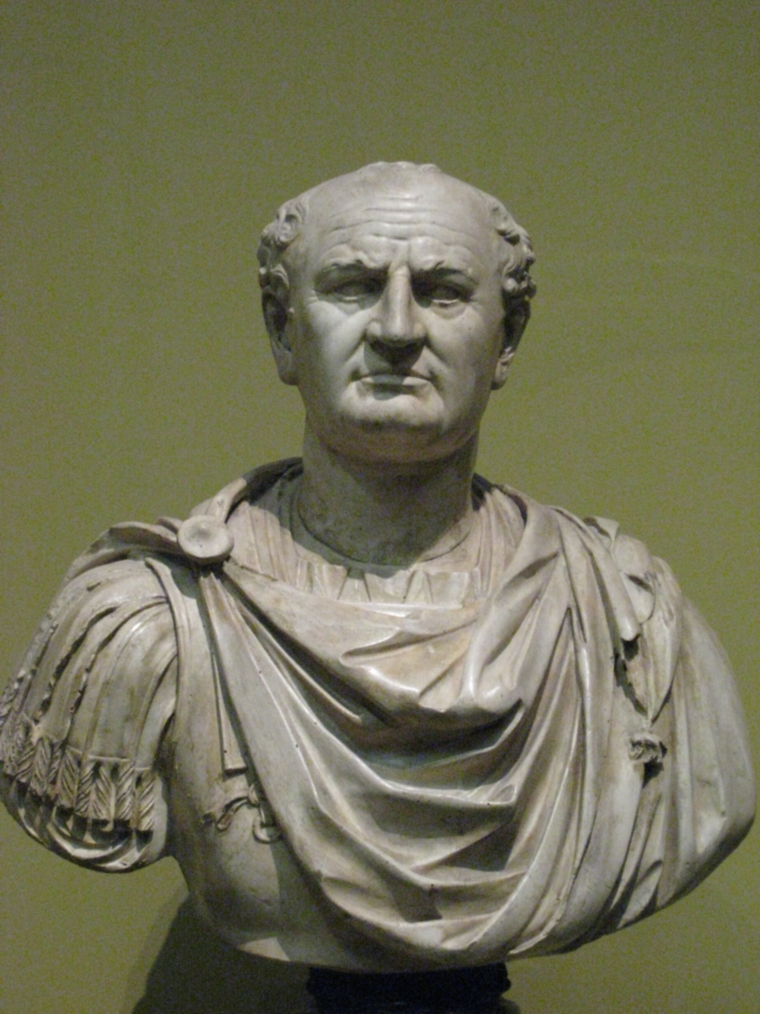
Vespasian -en.wikipedia.org 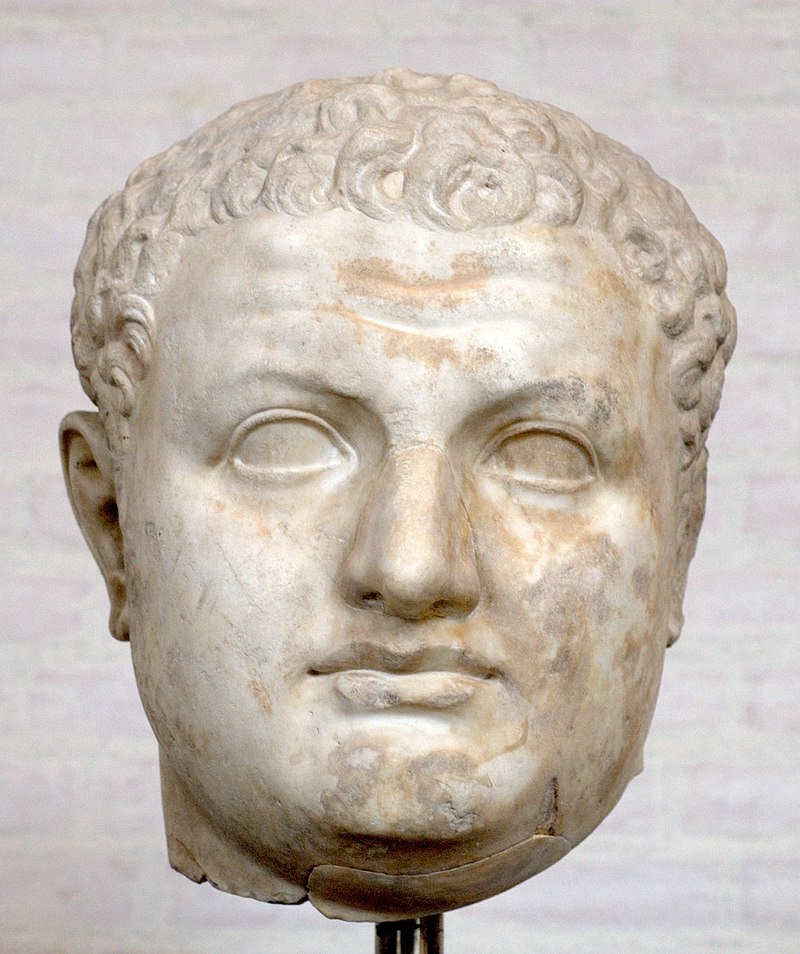
Titus -commons.wikimedia.org -
One of the most interesting facts about Domitian is that he was a Roman emperor who reigned from 81 to 96 and his 15-year reign was the longest since that of Tiberius. Domitian, as emperor, soon discarded the republican façade that his father and brother had maintained during their rule. Domitian openly abolished the Senate's powers by shifting the center of government to the imperial court. Domitian, according to Pliny the Younger, believed the Roman Empire should be governed as a divine monarchy, with himself as the beneficent despot at the helm. Domitian believed that the emperor's job included directing the Roman people as a cultural and moral authority, in addition to exercising absolute political power. To welcome the new era, he embarked on ambitious economic, military, and cultural plans aimed at restoring the Empire to its former glory under Emperor Augustus.
Despite his ambitious plans, Domitian was resolved to manage the Empire with care and precision. He got directly involved in all aspects of government, issuing edicts dictating the most minute matters of daily life and law, while taxation and public morals were strictly enforced. According to Suetonius, the imperial administration was never more effective than under Domitian, whose high standards and distrustful disposition kept provincial governors and elected officials at historically low levels of corruption. Although he made no pretense about the Senate's importance under his absolute power, senators he judged worthlessly were ejected from the Senate, and in the distribution of public appointments, he rarely favored family members, a policy that contrasted with Vespasian and Titus' nepotism.
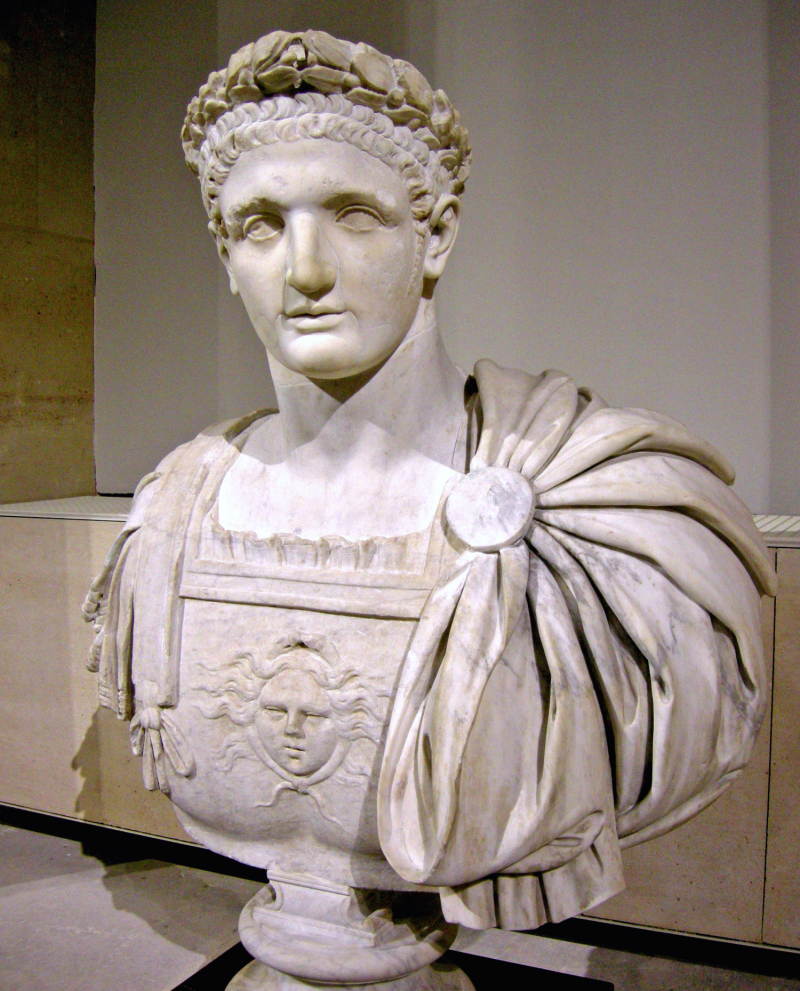
en.wikipedia.org 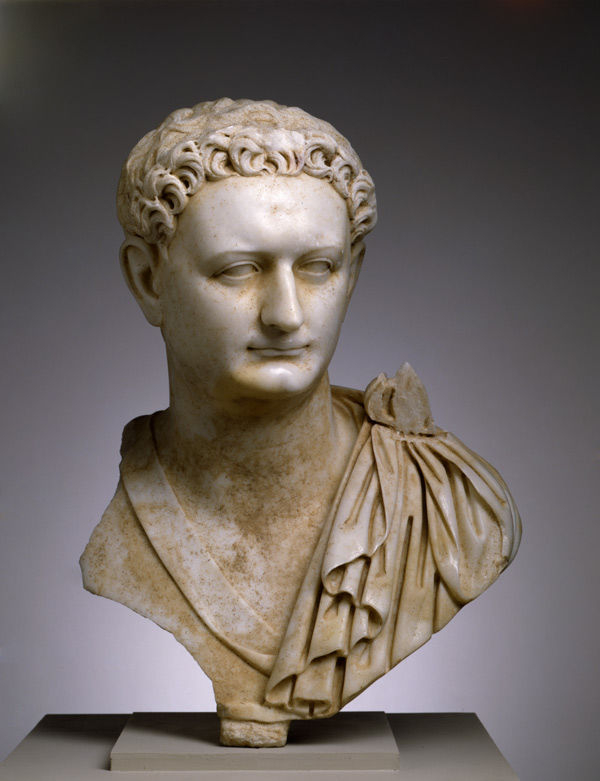
metmuseum.org














